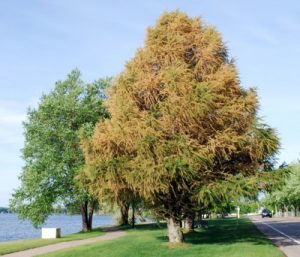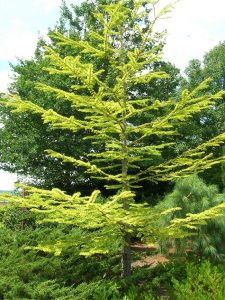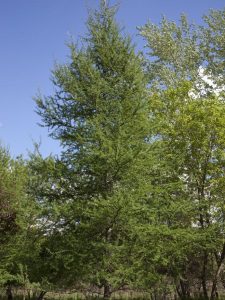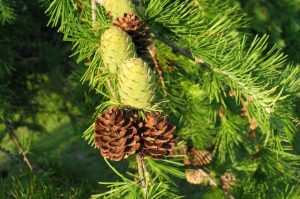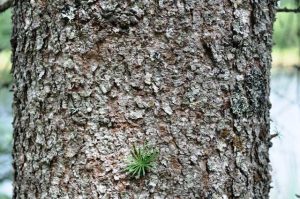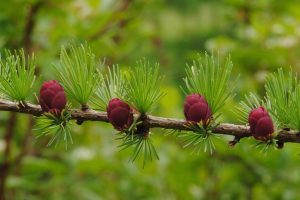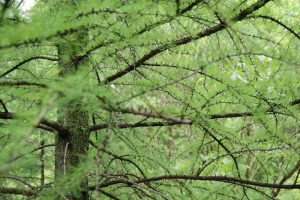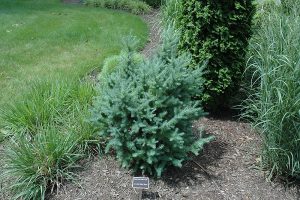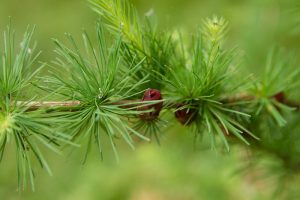Tamarack
Tamarack is a boreal larch tree belonging to the pine family. The medium to large tree has a beautiful coloration especially during the fall, when the foliage are about to shed.
Scientific Classification
| Kingdom | Plantae |
| Division | Pinophyta |
| Class | Pinopsida |
| Order | Pinales |
| Family | Pinaceae |
| Genus | Larix |
| Scientific Name | Larix laricina |
Quick Information
| Also Known as | Eastern larch, red larch, hackmatack, black larch, American larch |
| Tree Type | Coniferous and deciduous |
| Identification | Size: 33-66 ft in height (10-20 m) Trunk Diameter: 2 ft (0.6 cm) Needles: 1-1.1 in (2-3 cm) sea-green in color Bark: Pink, sometimes looks reddish Cones: 0.39- 0.098 in (1-2.5 cm) bright red in general and turns to brown while releasing the seeds |
| Distribution | Canada, northwestern U.S.A |
| Habitat | Conifer forest, Tundra |
| Hardiness Zone | 2-5 |
| Growth Rate | Fast |
| Lifespan | 200-300 years |
| Growing Conditions | Sun: Full exposure Water: Plenty of water (constant) Soil: moist organic soil (sphagnum), wet, swamps, coarse sand, heavy clay and calcareous soils |
| Drought Tolerant | No |
| Diseases & Pests | Diseases: Larch canker caused by Lachnellula willkommii fungus Pest: Sawfly, larch looper, Japanese beetle, tussock moth, woolly aphids and larch case-bearer |
| Reproductive System | Monoecious |
| Propagation | From cuttings |
| Seedling Development | Germinates well under the direct sunlight |
| Companion Plants | Labrador Tea, false Solomon’s-seal, sedges, and red twig dogwood |
| Wildlife Value | The seeds are food to red squirrels, while seedlings are common treat for snowshoe hares, the inner bark of the tree is fed by porcupines. Birds like song sparrow, white-throated sparrow, common yellowthroat, Nashville warbler, and veery use the tree for nesting |
| Uses | The wood is used for making snowhorse and other sturdy things like knee of a wooden boat, fuelwood, poles, posts, and pulpwood |
| IUCN Conservation Status | Least Concern |
Interesting Facts
- The name of the tree is an Algonquian (a Native American language group) term means the wood used for snowshoes.
- Although it grows well in the full exposure of light, the tree has a tremendous power to withstand cold temperatures down to -85°F.
- The indigenous people of north Canada used the inner bark of the tree to heal hemorrhoids, frostbite, wounds, and cuts. The roots and outer bar were also used with a mixture of other tree parts as a remedy of pain, aches, and arthritis.
References:
- https://www.gardeningknowhow.com/ornamental/trees/larch/tamarack-tree-information.htm
- http://www.missouribotanicalgarden.org/PlantFinder/PlantFinderDetails.aspx?kempercode=d883
- https://www.fpl.fs.usda.gov/documnts/usda/amwood/268tamar.pdf
- http://www.adirondackvic.org/Trees-of-the-Adirondacks-Tamarack-Larix-laricina.html
Published on December 11th 2018 by Sahana Kanjilal under Larch.
Article was last reviewed on 9th May 2023.


